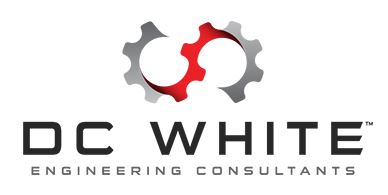 Add My Company
Add My Company
Sign In
Vibration analysis on optical laser
05-12-2023

The Good the Bad and the Wrong
One of our clients was experiencing trouble with unacceptable levels of vibration seen at optical laser used for laser interferometer. This problem was confounded by the additional requirement of a more stringent specification requirement on entering a new market.
DC White were brought on board as design partners to develop a solution which would work in the new market place and in the current design. This partnership was initiated with a vibration and thermal analysis of the current design, including a complete model of the internal structure. The findings of the initial study showed that the existing isolation solution was much too stiff and required significant modification with a much lower stiffness solution to be viable. In addition it was demonstrated that the air flow inside the unit was less than ideal and the existing setup did not encourage air flow along the cooling fins.
Figure 1 - De-featured 3D geometry with lid hidden
DC White proceeded to produce a design solution which included a more emphatic isolation strategy to provide lower natural frequencies with good damping levels, this also allowed for the cooling fins to be aligned with the airflow through the unit to increase the cooling ability. Made more difficult by the stringent requirement on space, with the desire for the unit to is rack mountable having a profile no more than 85 mm. The result was a proposed solution which would meet the demanding specifications set by the end user for space, temperature and vibration the response against specification is seen in Figure 2.
Figure 2 - Acceleration against specification of DC White proposed solution
The next phase of the project involved the design and construction of a suitable housing system for the laser interferometer which required both a heating and cooling solution, this significantly increasing the size of the unit. This phase of the project involved bringing on board a further design partner specialising in mounting system and cases. Resulting in a significant increase in weight and size, the DC White isolation solution was now mounted on a further isolation system for the cooling system and other ancillaries.
Figure 3 - De-featured 3D geometry including all ancillaries with case hidden
DC White now tasked with modelling the effect of the complete solution against the specification. This required a new analysis model to be created including the proposed casing unit and all ancillaries, Figure 3. The outcome of this analysis, shown in Figure 4, demonstrated that the isolation system proposed by the case supplier was ineffective with several natural frequencies inside the operating range of the unit. Unfortunately the second phase of analysis could not be initiated until the case design had been completed which did not allow for enough time to rectify the issue before the unit went to initial testing. It was decided to go ahead with the testing to get a base line to correlate our analysis against.
Figure 4 -Initial prediction of acceleration against specification of complete solution
Upon completion of the initial testing it was demonstrated that the unit did indeed fail the specification for vibration and shock, however the magnitude of the failure was less than that predicted and the behaviour varied with both direction and input.
A further phase of analysis was initiated to correlate the measured vibration data with that predicted by the analytical model. This was only achieved by deviating significantly from the manufacturers published data, for the isolation units used on the design. The correlation achieved for both shock and vibration is shown in Figure 5 and Figure 6. This allowed our client to approach both the case supplier and the isolator supplier to explain the discrepancy between measured and predicted results, which were as much as a factor of 4 out in some axis. Putting our client in a strong negotiating position to have the issues addressed within the original scope.
Figure 6 - Correlation of predicted shock response with measured shock response
Due to the level of understanding which had been built up by DC White and the confidence built with our client they insisted that we take a leading role in the development of a solution to the issues. The solution in the end was to have the isolator supplier modify their standard units so that it fell much closer to the original component specification, the results of the measured vibration response with the DC White solutions in place can be seen in Figure 7 and Figure 8.
For more information on Vibration analysis on optical laser talk to DC White Engineering Consultants
Enquire Now
List your company on FindTheNeedle.

